Committed to Improving Our Community
Creating Positive Change for 100 Years
United Way of Central Alabama (UWCA) has a rich history of helping people in need and building stronger communities. From the very beginning, we were committed to cooperative action that helped make a meaningful difference in people’s lives.
Originally known as the Birmingham Community Chest, UWCA was founded in 1923 with a goal of raising $450,000 through one annual campaign to help support 31 local nonprofits (partner agencies) that provided essential services to people in need. The generosity of the community ran deep. Even in 1929, the year of the stock market crash and the beginning of the Great Depression, more than half a million dollars was raised despite desperate economic conditions.
As services steadily expanded to cover a broader area and reach more people in the 1930 and ‘40s, the organization became known as the Jefferson County Community Chest. In 1943, during World War II, after temporarily adopting the national designation “United Community and War Chest” in support of our armed forces, the annual campaign produced more than $1 million for the first time. And in 1956, the name was officially changed to United Appeal, reflecting the annual joint appeal for funds by both the Community Chest and the American Red Cross. Two years later, the $2 million milestone was passed.
In 1969, United Appeal’s service area was expanded to include neighboring Shelby County. Then in 1970, agencies in Walker County joined as well. The legal name was changed to United Way-Community Chest of Central Alabama, Inc. in 1974 as an indication of our national affiliation with United Way. And in 1992, we became United Way of Central Alabama. Since then, our service area has expanded to six counties (Blount, Chilton, Jefferson, Shelby, St. Clair and Walker) with more than 100 partner agencies, programs and direct services focused on improving people’s health, education and financial stability.
Creating Positive Change for 100 Years
United Way of Central Alabama (UWCA) has a rich history of helping people in need and building stronger communities. From the very beginning, we were committed to cooperative action that helped make a meaningful difference in people’s lives.
Originally known as the Birmingham Community Chest, UWCA was founded in 1923 with a goal of raising $450,000 through one annual campaign to help support 31 local nonprofits (partner agencies) that provided essential services to people in need. The generosity of the community ran deep. Even in 1929, the year of the stock market crash and the beginning of the Great Depression, more than half a million dollars was raised despite desperate economic conditions.
As services steadily expanded to cover a broader area and reach more people in the 1930 and ‘40s, the organization became known as the Jefferson County Community Chest. In 1943, during World War II, after temporarily adopting the national designation “United Community and War Chest” in support of our armed forces, the annual campaign produced more than $1 million for the first time. And in 1956, the name was officially changed to United Appeal, reflecting the annual joint appeal for funds by both the Community Chest and the American Red Cross. Two years later, the $2 million milestone was passed.
In 1969, United Appeal’s service area was expanded to include neighboring Shelby County. Then in 1970, agencies in Walker County joined as well. The legal name was changed to United Way-Community Chest of Central Alabama, Inc. in 1974 as an indication of our national affiliation with United Way. And in 1992, we became United Way of Central Alabama. Since then, our service area has expanded to six counties (Blount, Chilton, Jefferson, Shelby, St. Clair and Walker) with more than 100 partner agencies, programs and direct services focused on improving people’s health, education and financial stability.

1920s
During the 1920s, Birmingham’s steel and pig iron production dwindled amid resistance to labor reform and the onset of the Great Depression, resulting in unprecedented unemployment.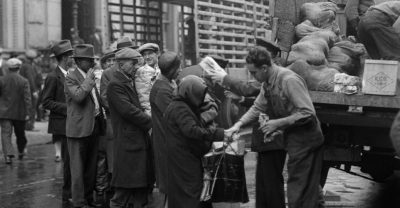 The Great Depression’s economic impact on Birmingham was especially intense, prompting President Franklin D. Roosevelt to refer to the city as “the worst hit town in the country.”
The Great Depression’s economic impact on Birmingham was especially intense, prompting President Franklin D. Roosevelt to refer to the city as “the worst hit town in the country.” In 1923, business and civic leaders formed the Birmingham Community Chest (now United Way of Central Alabama) to raise money on behalf of organizations that provided vital services to families in need. Harry J. Early was the first Executive Director.
In 1923, business and civic leaders formed the Birmingham Community Chest (now United Way of Central Alabama) to raise money on behalf of organizations that provided vital services to families in need. Harry J. Early was the first Executive Director. Crawford Toy Johnson, Sr. was the Birmingham Community Chest’s first Campaign Chair. Johnson helped raised $450,000.
Crawford Toy Johnson, Sr. was the Birmingham Community Chest’s first Campaign Chair. Johnson helped raised $450,000. Did you know there were hundreds of Community Chests around the nation? The Monopoly game card was inspired by the actual Community Chest in Atlantic City, NJ.
Did you know there were hundreds of Community Chests around the nation? The Monopoly game card was inspired by the actual Community Chest in Atlantic City, NJ. Many of the nonprofits supported during the first campaign became partner agencies of the Birmingham Community Chest.
Many of the nonprofits supported during the first campaign became partner agencies of the Birmingham Community Chest.
1930s
In 1931, during the worst of the Depression, Campaign Chair Mervyn H. Sterne raised $750,000 in just two weeks to help support local nonprofits in the Birmingham area.
1940s
During the 1930s and 1940s, President Roosevelt’s New Deal provided work through the Civilian Conservation Corps (CCC), which was responsible for running telephone lines and building roads, bridges and parks. The United States was thrust into WWII after Japan attacked Pearl Harbor on December 7, 1941. Three days later, both Germany and Italy declared war against the U.S.
The United States was thrust into WWII after Japan attacked Pearl Harbor on December 7, 1941. Three days later, both Germany and Italy declared war against the U.S.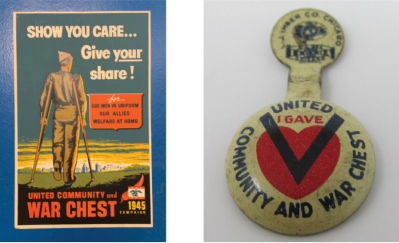 Fundraising efforts throughout the U.S. shifted to support the costs associated with WWII. As a result, campaigns in the 1940s asked for donations in support of the “United Community and War Chest.”
Fundraising efforts throughout the U.S. shifted to support the costs associated with WWII. As a result, campaigns in the 1940s asked for donations in support of the “United Community and War Chest.” Did you know? The Red Feather was adopted as a symbol of valor by all Community Chests nationwide in 1945. It represented a united effort to support the troops abroad.
Did you know? The Red Feather was adopted as a symbol of valor by all Community Chests nationwide in 1945. It represented a united effort to support the troops abroad.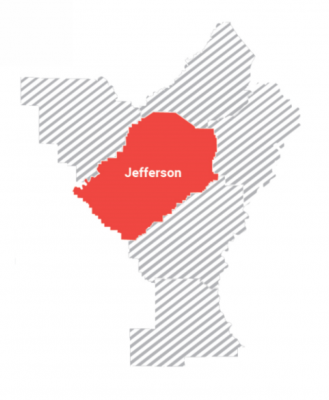 The service area of the Birmingham Community Chest was steadily expanding to help more and more people. So, from the mid-1930s through the 1940s, the organization became known as the Jefferson County Community Chest.
The service area of the Birmingham Community Chest was steadily expanding to help more and more people. So, from the mid-1930s through the 1940s, the organization became known as the Jefferson County Community Chest.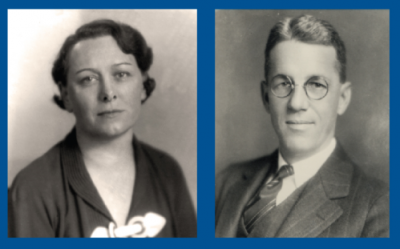 In 1943, our annual campaign raised more than $1 million for the first time through the efforts of Florence Adams, the first woman to lead our Community Chest as Executive Director, and Board Chair Jelks Cabaniss.
In 1943, our annual campaign raised more than $1 million for the first time through the efforts of Florence Adams, the first woman to lead our Community Chest as Executive Director, and Board Chair Jelks Cabaniss.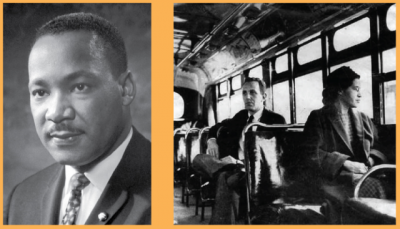
1950s
While Dr. Martin Luther King, Jr. and Rosa Parks were peacefully advancing the Civil Rights Movement of the ’50s and ’60s, the Jefferson County Community Chest remained steadfastly engaged with the African American community.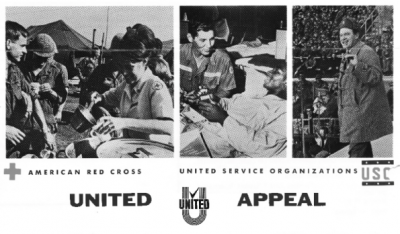 In 1956, the Jefferson County Community Chest changed its name to United Appeal (reflecting the joint appeal for funds by the Community Chest and the American Red Cross). Three years later, M.R. “Rudy” Norton became the organization’s third Executive Director.
In 1956, the Jefferson County Community Chest changed its name to United Appeal (reflecting the joint appeal for funds by the Community Chest and the American Red Cross). Three years later, M.R. “Rudy” Norton became the organization’s third Executive Director.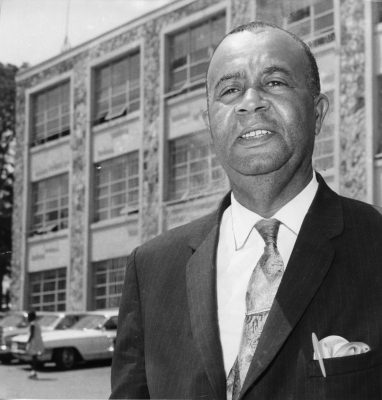 B.M. Montgomery was a key advocate and fundraiser for United Appeal in the African American community during the ’50s and ’60s. He chaired a public relations committee and was a lifelong educator and the principal of Rosedale School in Homewood.
B.M. Montgomery was a key advocate and fundraiser for United Appeal in the African American community during the ’50s and ’60s. He chaired a public relations committee and was a lifelong educator and the principal of Rosedale School in Homewood.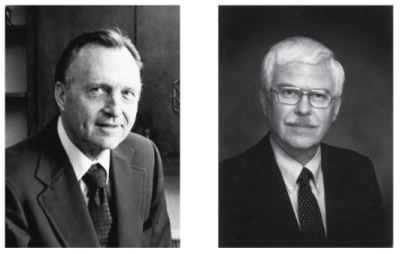
1960s
Roscoe D. Whatley (left) was named Executive Director of United Appeal in 1963; and in 1965, David G. Orrell (right) began his 24-year run as leader of the organization during the tumultuous time of the Vietnam War and the Civil Rights Movement.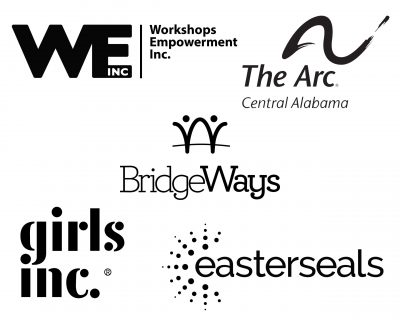 Five more partner agencies join United Appeal during the 1950s and 1960s.
Five more partner agencies join United Appeal during the 1950s and 1960s. In 1966, Dr. A.G. Gaston and Dr. E.W. Taggart (second and third from left) became the first African Americans elected to United Appeal’s Board of Directors. Dr. Gaston was a community leader who founded the A.G. Gaston Boys & Girls Club, which later became a United Appeal partner agency.
In 1966, Dr. A.G. Gaston and Dr. E.W. Taggart (second and third from left) became the first African Americans elected to United Appeal’s Board of Directors. Dr. Gaston was a community leader who founded the A.G. Gaston Boys & Girls Club, which later became a United Appeal partner agency.
1970s
During the ’70s and ’80s, United Appeal added Shelby, Walker and Blount counties to its service area to reach even more people in need through a growing number of partner agencies.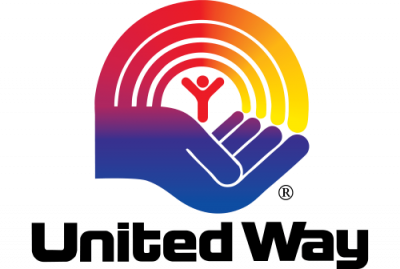 In 1974, United Appeal changed its name to United Way, reflecting its national affiliation.
In 1974, United Appeal changed its name to United Way, reflecting its national affiliation.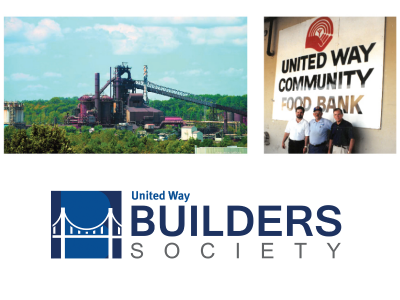
1980s
In the early 1980s, there were massive layoffs in the steel industry. United Way responded by creating the Community Food Bank as well as a new level of leadership giving called the Builders Society. Did you know that United Way’s local chapter of the Tocqueville Society was formed in 1986 with 36 charter members? Tocqueville members are exemplary philanthropic leaders and volunteers who devote time, talent and funds to help United Way create positive, lasting change in our community. Ours is now one of the top five Tocqueville chapters in the nation with more than 900 members.
Did you know that United Way’s local chapter of the Tocqueville Society was formed in 1986 with 36 charter members? Tocqueville members are exemplary philanthropic leaders and volunteers who devote time, talent and funds to help United Way create positive, lasting change in our community. Ours is now one of the top five Tocqueville chapters in the nation with more than 900 members.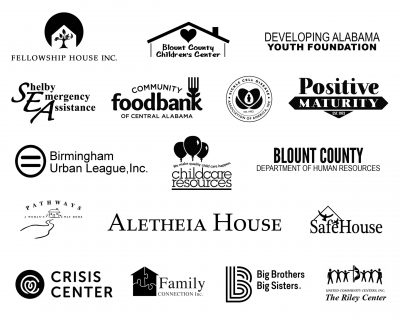 In addition to expanding its geographic footprint in the 1980s, United Way increased its breadth of services through more partner agencies.
In addition to expanding its geographic footprint in the 1980s, United Way increased its breadth of services through more partner agencies. Recognizing the need of many women to enter the workforce due to layoffs in the steel industry, Childcare Resources was created through a task force convened by United Way in 1984.
Recognizing the need of many women to enter the workforce due to layoffs in the steel industry, Childcare Resources was created through a task force convened by United Way in 1984.
1990s
Daniel J. Dunne served as President and CEO of United Way from 1990 to 2008. His many achievements included starting United Way’s endowment fund as well as the grants management program that generated more than $70 million during his tenure, allowing United Way to provide additional services to fill unmet needs in the community.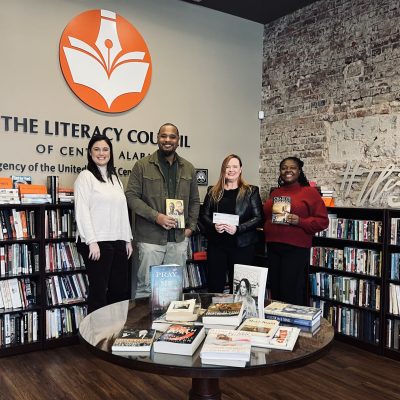 In 1991, United Way, the Birmingham Area Chamber of Commerce and the Junior League identified a specific need to address adult illiteracy on a local basis. They worked together to create The Literacy Council of Central Alabama, a United Way partner agency.
In 1991, United Way, the Birmingham Area Chamber of Commerce and the Junior League identified a specific need to address adult illiteracy on a local basis. They worked together to create The Literacy Council of Central Alabama, a United Way partner agency. In 1991, United Way added St. Clair County to its service area to reach more people in need.
In 1991, United Way added St. Clair County to its service area to reach more people in need. Alice McSpadden Williams was one of UWCA’s most passionate lifelong supporters, advocates and volunteers. After serving the organization in numerous advisory roles, she became the first woman to chair the Board of Directors in 1992.
Alice McSpadden Williams was one of UWCA’s most passionate lifelong supporters, advocates and volunteers. After serving the organization in numerous advisory roles, she became the first woman to chair the Board of Directors in 1992. Many more local nonprofits became United Way partner agencies during the 1990s.
Many more local nonprofits became United Way partner agencies during the 1990s.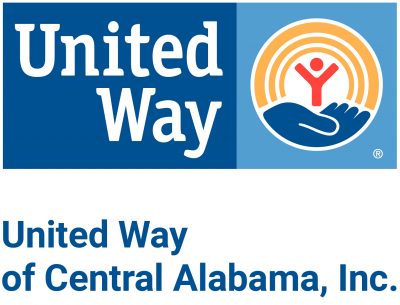 The organization’s name was changed to United Way of Central Alabama (UWCA) in 1992 with a focus on addressing needs in health, education, financial stability and access to services.
The organization’s name was changed to United Way of Central Alabama (UWCA) in 1992 with a focus on addressing needs in health, education, financial stability and access to services.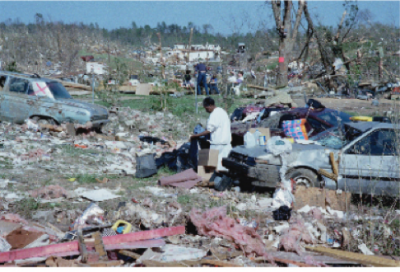 Did you know that following a series of disastrous tornadoes in 1998, United Way also became directly involved in crisis response and recovery?
Did you know that following a series of disastrous tornadoes in 1998, United Way also became directly involved in crisis response and recovery?
2000s
A Women’s Division of United Way dates back to the 1930s; but in 2002, Women United was officially launched as a vibrant network of diverse women committed to strengthening our community through philanthropy and volunteerism. Did you know? United Way of Central Alabama has worked diligently to earn its reputation as a trustworthy steward of donors’ money. As confirmation, UWCA has been audited and awarded the highest Four-Star rating by Charity Navigator every year since 2003.
Did you know? United Way of Central Alabama has worked diligently to earn its reputation as a trustworthy steward of donors’ money. As confirmation, UWCA has been audited and awarded the highest Four-Star rating by Charity Navigator every year since 2003.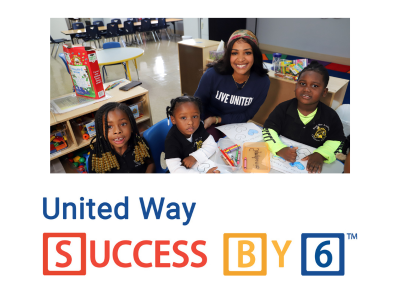 In 2005, United Way launched an innovative program called Success By 6, an initiative designed to transform basic childcare into high-quality early learning so that children are better prepared to succeed when starting school.
In 2005, United Way launched an innovative program called Success By 6, an initiative designed to transform basic childcare into high-quality early learning so that children are better prepared to succeed when starting school.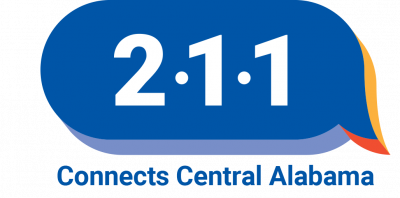 In 2007, United Way launched its 2-1-1 information and referral line, connecting those in need with more than 800 community organizations throughout Central Alabama. The 2-1-1 call center receives thousands of calls each year.
In 2007, United Way launched its 2-1-1 information and referral line, connecting those in need with more than 800 community organizations throughout Central Alabama. The 2-1-1 call center receives thousands of calls each year. Drew Langloh was named President and CEO of United Way in 2008. Through his leadership, United Way has become a community-led organization – not only supporting local agencies, but also working to solve community problems by building data-driven coalitions and attracting investment from large national foundations and federal agencies.
Drew Langloh was named President and CEO of United Way in 2008. Through his leadership, United Way has become a community-led organization – not only supporting local agencies, but also working to solve community problems by building data-driven coalitions and attracting investment from large national foundations and federal agencies.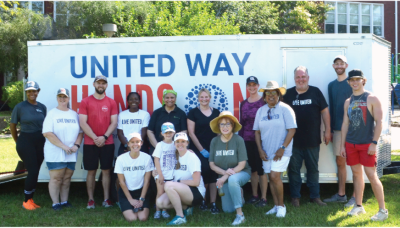 In 2008, United Way Hands On became United Way’s volunteer center, which organizes opportunities for groups and individuals to make a positive difference in our community.
In 2008, United Way Hands On became United Way’s volunteer center, which organizes opportunities for groups and individuals to make a positive difference in our community.
2010s
In 2013, United Way expanded direct services to the community by launching Priority Veteran, a program helping homeless and at-risk veterans. In 2014, UWCA formed the Bold Goals Coalition as a way of pooling ideas, talent and resources among 200 organizations so that major community issues can be more effectively addressed.
In 2014, UWCA formed the Bold Goals Coalition as a way of pooling ideas, talent and resources among 200 organizations so that major community issues can be more effectively addressed.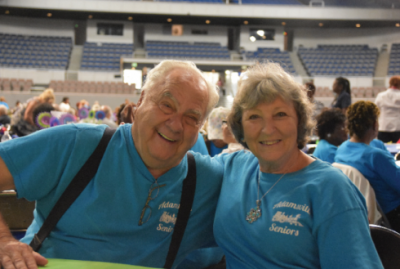 United Way’s direct services to seniors and people with disabilities reached new heights in 2016 with the addition of Meals on Wheels and the Area Agency on Aging (AAA).
United Way’s direct services to seniors and people with disabilities reached new heights in 2016 with the addition of Meals on Wheels and the Area Agency on Aging (AAA). Meals on Wheels delivers more than a quarter million meals a year to homebound clients and AAA offers a dozen free programs ranging from Medicare counseling to Tai Chi classes.
Meals on Wheels delivers more than a quarter million meals a year to homebound clients and AAA offers a dozen free programs ranging from Medicare counseling to Tai Chi classes. In 2015, the Young Leaders Society was rebranded as the Young Philanthropists Society (YPS), a group of young professionals who share a passion for moving Central Alabama forward.
In 2015, the Young Leaders Society was rebranded as the Young Philanthropists Society (YPS), a group of young professionals who share a passion for moving Central Alabama forward.
Named in honor of J. Mason Davis (second from right) in 2019, the J. Mason Davis Leadership Society is a group of African American leaders who make a positive impact on our community as champions of diversity and opportunity. From 2003 to 2019, nine local nonprofits became United Way partner agencies.
From 2003 to 2019, nine local nonprofits became United Way partner agencies. In 2019, when tornadoes devastated Opelika in east Alabama, United Way immediately made a multi-media appeal to our own community and launched a new webpage for tornado relief. A total of $194,143 was raised on behalf of United Way of Lee County.
In 2019, when tornadoes devastated Opelika in east Alabama, United Way immediately made a multi-media appeal to our own community and launched a new webpage for tornado relief. A total of $194,143 was raised on behalf of United Way of Lee County.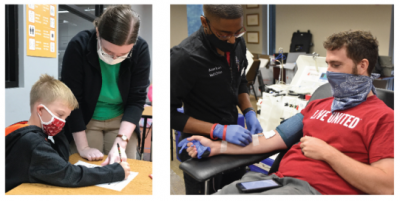
2020s
By the beginning of 2020, the COVID-19 pandemic forced most businesses and schools to close or drastically change the way they operated. United Way and its partner agencies and programs continued to provide vital services while many, such as the YMCA and Boys and Girls Clubs, offered all-day childcare, extra meals and help with homework and remote learning. Because the services of many partner agencies and other area nonprofits were so essential during the pandemic, United Way created the Community Crisis Fund, which raised and allocated an extra $3.8 million to support our partners and ensure that people’s immediate needs were met. Through these mission-driven efforts, United Way proved to be the community’s safety net in the worst of times.
Because the services of many partner agencies and other area nonprofits were so essential during the pandemic, United Way created the Community Crisis Fund, which raised and allocated an extra $3.8 million to support our partners and ensure that people’s immediate needs were met. Through these mission-driven efforts, United Way proved to be the community’s safety net in the worst of times. During 2021, United Way extended its service area once again with the addition of Chilton County and nine new partner agencies.
During 2021, United Way extended its service area once again with the addition of Chilton County and nine new partner agencies.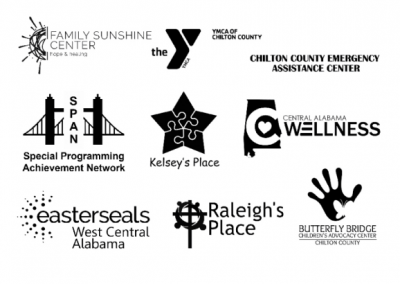 In 2021, nine nonprofits from Chilton County became United Way partner agencies.
In 2021, nine nonprofits from Chilton County became United Way partner agencies. United Way now has more than 100 partner agencies and programs, supported by one of the most generous communities in the nation. Our next step is implementing a strategic plan, under the guidance of Board Chair Chip Bivins (left), focused on extending support to underserved pockets of Central Alabama. This may include as many as 1,200 locations offering help with everything from food and housing to transportation and healthcare. Because to live better, we must LIVE UNITED.
United Way now has more than 100 partner agencies and programs, supported by one of the most generous communities in the nation. Our next step is implementing a strategic plan, under the guidance of Board Chair Chip Bivins (left), focused on extending support to underserved pockets of Central Alabama. This may include as many as 1,200 locations offering help with everything from food and housing to transportation and healthcare. Because to live better, we must LIVE UNITED.